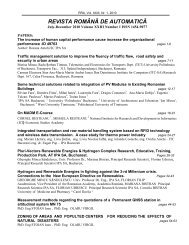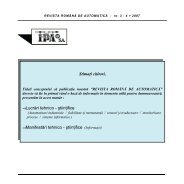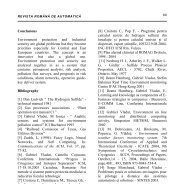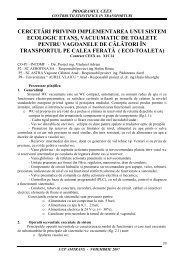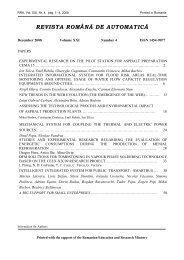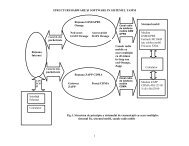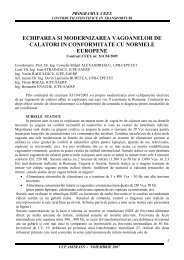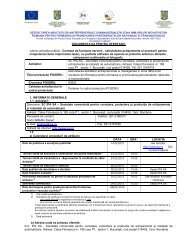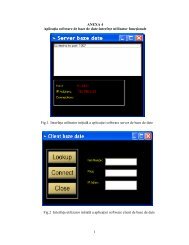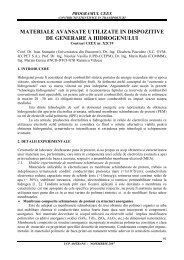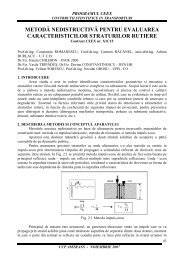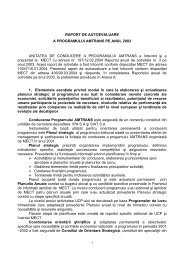Part II - IPA SA
Part II - IPA SA
Part II - IPA SA
Create successful ePaper yourself
Turn your PDF publications into a flip-book with our unique Google optimized e-Paper software.
REVISTA ROMÂN DE AUTOMATIC<br />
31<br />
which do not require excessive hardware<br />
requirements, should also minimize the cost<br />
of the server side set-up. As far as it concerns<br />
the web server, it is used for storing the<br />
client-side files of the Virtual Robot, voice<br />
chat and text chat. Furthermore, the web<br />
server stores and executes the PHP scripts to<br />
obtain the users' data from a database. The<br />
web server that satisfies these prerequisites is<br />
the Apache web server, which is free of<br />
charge, runs on almost all operating systems,<br />
supports PHP scripts, can host Director and<br />
Flash movies and can interoperate with<br />
MySQL, Macromedia Flash Communication<br />
Server MX and Java. The internal structure of<br />
the Virtual Robot Center is presented in<br />
Figure 2.<br />
As Figure 3 shows, the basic graphical user<br />
interface GUI of ViReC contain 5 topics<br />
(links): Docs, Tutorial, Exercises, Online<br />
Support and Plugins. It can be downloaded<br />
from our site http://www.ipacv.ro<br />
/proiecte/robotstudio/index.<br />
Fig. 4. The GUI interface for the topics ”Docs”<br />
Fig.2. The structure of the Virtual Robot Center<br />
Fig. 3. The initial starting GUI interface of ViReC<br />
The "Docs" topics presents basics<br />
information for the user. Before using the<br />
compiler, it is necessary for any user to<br />
enrich his knowledge by reading about the<br />
robot controller, the robot programming<br />
language and communication protocols, how<br />
to make a module or a routine, how to<br />
combine them into a program, how to read<br />
and analyze the programming instruct-tions<br />
and the complete examples presented in this<br />
section. The information is enough in order to<br />
offer support for a user with medium skills in<br />
this domain. Because the use and the<br />
programming is limited by the real robot<br />
operaional space, the user has to know more<br />
information about: the coordinates of robot<br />
movement, the position of the table with<br />
pneumatic devices which are placed facing<br />
the robot, the pieces type and their position<br />
on the table, the buffers where the raw pieces<br />
are gathered and the way the pneumatic<br />
extractors act. This section also presents the<br />
most useful instructions of programming (for<br />
moving, for activating and deactivating<br />
sensors, for logical, arith-metic, assigning,<br />
conditioning, looping, selection etc), together<br />
with examples of programs. A<strong>II</strong> these<br />
information (Figure 4) are gruped in the<br />
folowing 10 chapters: Basic Characteristics<br />
(including the sections: Modules, Routines,



